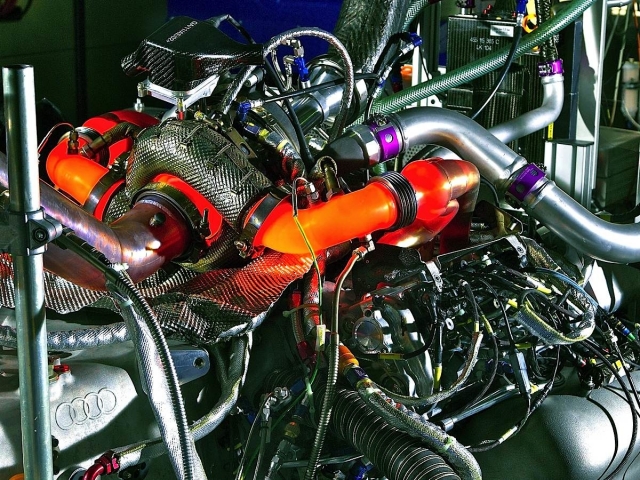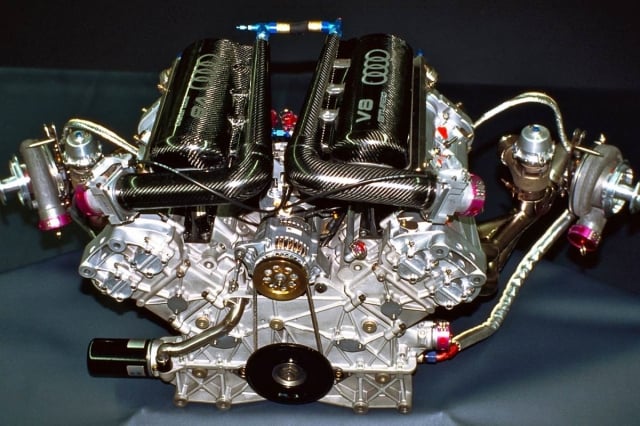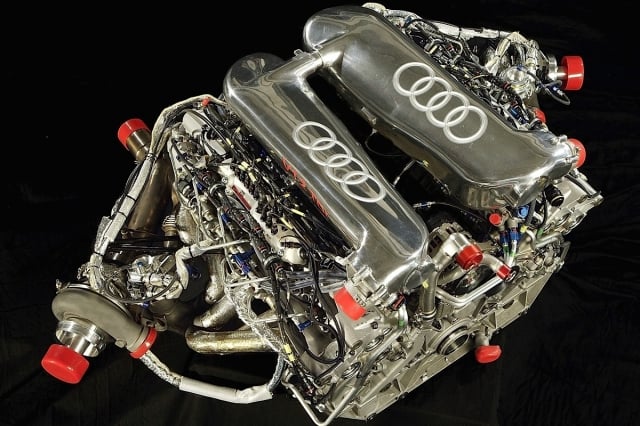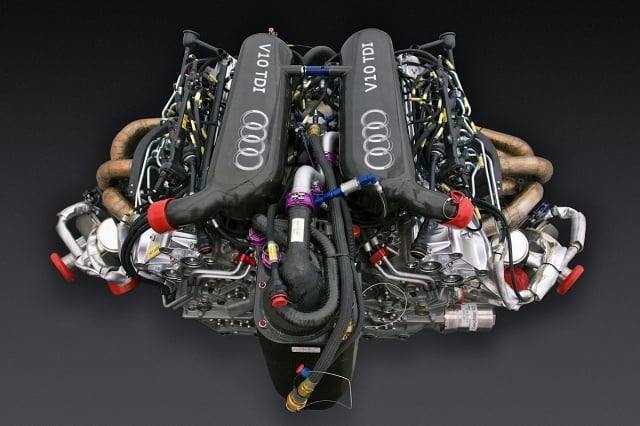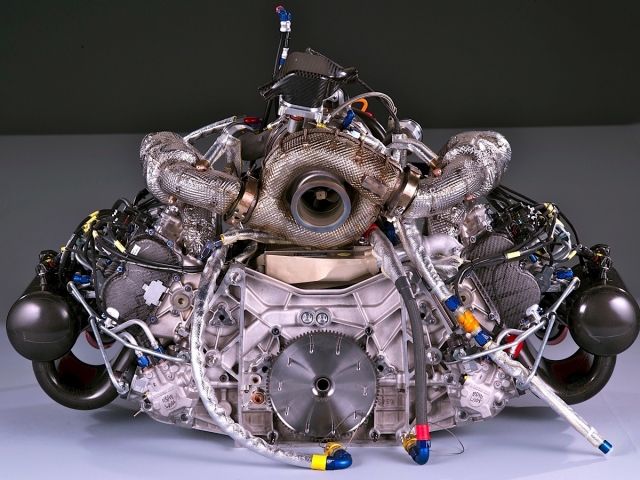 [1]
[1]Front view of the Audi 3.7-liter V6 diesel shows the 120-degree cylinder-bank angle and the double-flow design of the turbine on the turbocharger that receives exhaust from the inboard side of the cylinder head. Also note the carbon-fiber intake manifolds on each side.
With the 90th anniversary of the 24 Hours of Le Mans just around the corner, perennial favorite Audi [2] released a recap of its engine development in the past 15 years, with an emphasis on how some of that technology is trickling down to production vehicles.
Audi started with a gasoline 3.6-liter twin-turbo V8 in winning the 2000 Le Mans race, then switched to a 5.5-liter V12 diesel in 2006 followed by a second-generation V10 diesel a couple years later. The current engine designed for the R18 etron quattro AWD hybrid is a 3.7-liter single turbo diesel with a radical 120-degree cylinder block to keep the weight low and allow for cleaner exhaust routing, which is on the inboard or “hot” side of the cylinder heads. One of the biggest challenges posed to the Audi engineers was working around those 1,800F degree exhaust temperatures. Another unique feature is the Honeywell Garrett turbo with a double-flow design on both the turbine and compressor sides. It also sports variable turbine geometry (VTG) — another technology used on Audi cars.
How much power?
According to Audi, the 3.6L gas engine delivered around 610 horsepower with its TFSI direct injection system, which is now used on many Audi engines. The first Audi diesel engine with an aluminum block, the V12 TDI pumped out over 810 lb-ft of torque and was rated at 650 horsepower. Development of the diesel technology continues with emphasis on the injection system. The race engine has injection pressures of 2,800 bar (or 40,600 psi) while Audi’s production engines are around 2,000 bar (29,000 psi).
Two views of the single turbo used on the 3.7-liter Audi V6 diesel. Note the narrow inlet restriction that mandated by the rules. The Honeywell Garrett turbo utilizes a double-flow design on both the turbine and compressor sides. The control unit enclosed in carbon fiber on top manages the turbine vane angles for the VTG system.
Rule makers continually challenge Audi — just look at the tiny inlet trumpet, and the allowable boost has been chopped — so absolute power output is down from the monster V12 heyday and is closer to 500 horsepower. But first, consider that the V6 is supported by an electric hybrid motor that drives the front wheels — so the total output is much higher. Also consider that the horsepower per liter measurement went from 118 in 2006 to 146 in 2011 for a gain of 24 percent. Audi also points to the piston area output, which is a measure of the power delivered by each cylinder, and says this number grew from 54 horsepower to 90 horsepower for an increase of 65 percent. Yet at the same time, Audi claims fuel efficiency has improved by more than 20 percent. From left, the Audi 3.6-liter TFSI gas engine, the Audi 5.5-liter V12 TDI diesel and the 5.5-liter V10 TDI diesel.
